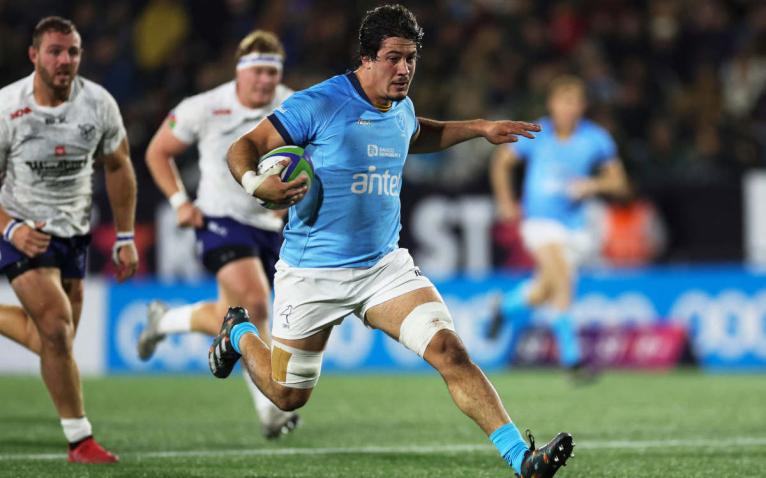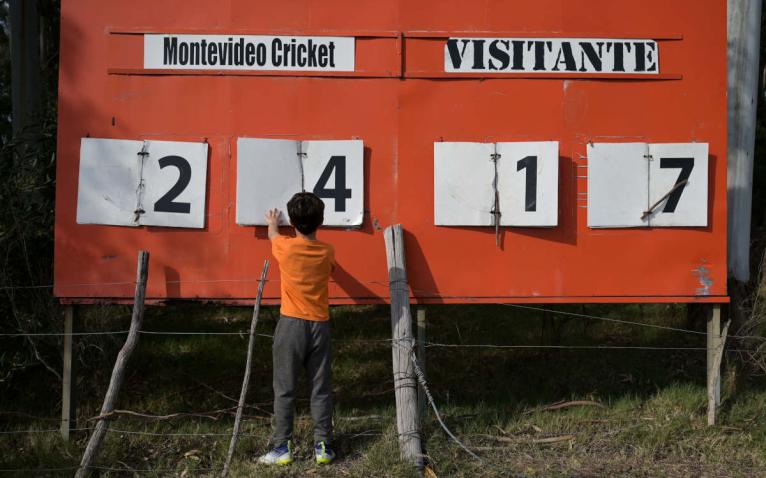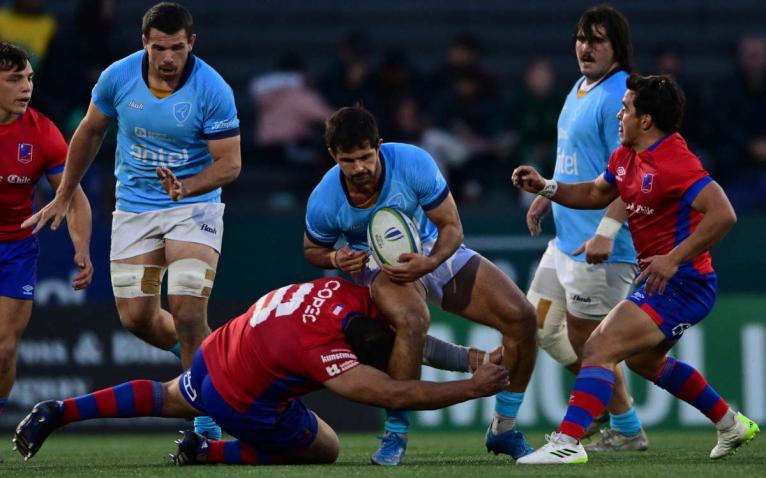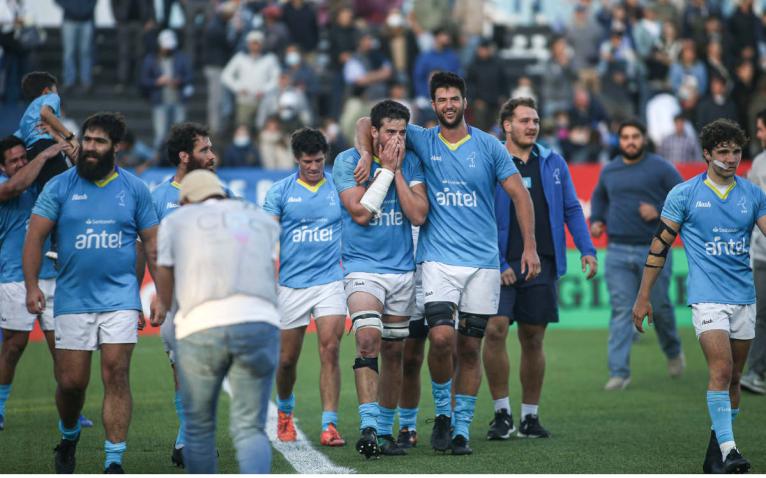Almost 3,5 million ‘Uruguayos’ reside in the 181,000 square kilometres, locked between Brazil to the north and Argentina to the east, and the boundaries set by the River Plate and the Atlantic Ocean.
Uruguay is a small paradise, with great beaches and farmland, a nation which, while modest in size, has managed to survive the constant problems besieging its two massive neighbours.
Rugby was started by the well-off British immigrants close to 100 years ago and has slowly developed, with Uruguay consistently punching well above its weight.
Vision, leadership, hunger and a siege mentality stemming from always being the smallest has brought the best out of a country and team which, against many odds, will be competing at its fifth – and third consecutive – Rugby World Cup.
Uruguay will have the unenviable task of tackling two of the biggest candidates to take the Webb Ellis Cup come 28th October – France and New Zealand. Their goal is to beat Italy and Namibia and qualify for Australia in four years’ time.
When Andrés Vilaseca returns to France, where he plies his rugby trade, as Los Teros captain, he will be playing in his third tournament. At his first, in 2015, he was led by older brother Santiago; it will be the first time two brothers have captained a team into the biggest of competitions.
“It brings huge happiness and pride to all the family,” says Santiago, who will travel with his pregnant wife, two children, mother, another brother and his girlfriend, to support Andrés and the team he once skippered.
“Unfortunately, our father died in 2009. He would have loved seeing us playing on the biggest stages. He was a huge fan.”

Santiago was a lock and Andrés is a centre; both were there when the Charrúa Stadium slowly became the high performance centre which today is the envy of Tier Two nations and probably a few Tier One counterparts.
“We hadn’t qualified for 2007 and 2011 and in 2011, whilst on tour in Portugal, the players spoke deeply with then president of the Unión de Rugby del Uruguay, Gustavo Zerbino (and survivor of the infamous 1972 Andes plane crash) about the differences between teams that qualified and those, like us, that didn’t.
“We’d go to a commercial gym, train 20km from there, if we needed doctors or physios, it was also in a different place, and we’d only prepare a couple of weeks ahead of a competition.”
The Estadio Charrúa, located in the Carrasco neighbourhood of Montevideo, a rugby hotbed, was built in 1980 and sat in a semi-abandoned state.
“My debut in 2008 was at the Charrúa. Changing rooms were dirty, the tunnel impossible to cross, the field of play was unusable,” remembers Vilaseca who will work on ESPN’s coverage in France.
After almost two decades based overseas, former head coach Pablo Lemoine led the programme, pushing carts, painting walls and mapping a high-performance dream to captivate his players
The long-term vision of a group of officials saw the union leasing it in 2012 from the city council, a lease which has been since extended.
Eleven years later, now with joint custody alongside the football federation, it has become the x-factor which has taken Los Teros, Los Teros Sevens and the Under-20s to the next level.
It wasn’t an easy, or cheap, road. The leadership of Marcello Calandra, URU president, who started negotiations with the council and pushed like the former Tero prop he was, proved key. Sebastián Piñeyrúa, former Uruguay coach and president, and current Sudamérica Rugby chairman and World Rugby Council Member, also played a major role. World Rugby – then the International Rugby Board – had crucial belief in the porject.
On the playing side, after almost two decades based overseas, former head coach Pablo Lemoine led the programme, pushing carts, painting walls and mapping a high-performance dream to captivate his players.

Lemoine is now trying a similar route with Chile, the third South American team to qualify to a Rugby World Cup.
The dream began on January 10 2013, when the doors officially opened for Los Teros to start working towards their goal of returning to the World Cup.
“Part of our success is to be happy, but with our feet on the ground,” explains Santiago Slinger, the URU president, former Test referee and Uruguay team manager in 2015 and 2019. In a small rugby community, those helping fulfil many different roles.
“We are looking far beyond 2023. There is a lot of planning and that has been the way in the last few years and we’ve done big things.”
A regular venue for international events, the Charrúa Stadium programme has also played a part in Uruguay Sevens’ Olympic qualification earlier this year. The U20s fell painstakingly short of qualifying to the top-tier championship, losing to Spain in the final of the World Rugby U20 Trophy in Kenya.
For our sportsmen and women, it is very challenging as our conditions often place them in a disadvantage. In rugby, we plan ahead, are united and have a unique place to prepare
Santiago ‘Bata’ Slinger, URU President
“We are all united behind rugby,” adds ‘Bata’ Slinger. “As a country, the Uruguayan spirit is to compete, we are always trying to win impossible finals.”
He argues the nation’s size unites everyone, supporting whichever players in whichever sport wear ‘la celeste’, the light blue colours.
With a balanced operational budget surpassing 4.5 million dollars and in a healthy state, rugby has become a leading light on the Uruguayan sporting scene.
“For our sportsmen and women, it is very challenging as our conditions often place them in a disadvantage. In rugby, we plan ahead, are united and have a unique place to prepare,” says Slinger.
One missing piece of the puzzle was a professional competition. From 2020, an Uruguayan franchise has participated in the Superliga Americana de Rugby (until 2022) and Super Rugby Americas, the premier continental tournament. Peñarol Rugby won the last two competitions. Twenty-nine of the 33 players flying to France have played for the team.

Uruguay have enjoyed significant government support too. President Luis Lacalle Pou is a former rugby player and still well connected in rugby circles. He will often pop up to watch his club, Old Boys, and is a regular follower of Los Teros at home. He even uses the Teros tie at functions.
The Director of Sports Federations, Eduardo Ulloa, is also a former player, and an ex-team-mate of one of Uruguay’s best, Rodrigo Capo Ortega.
Ulloa describes the Uruguayan Rugby Union “as a clock, a company. It is very easy to deal with them, there is a trust that ensures that when you work with rugby things will work.
“The Charrúa Stadium is a success story, almost a cathedral. It is aspirational for players and even other federations.”
The profile of rugby, with their success, knowing that they will also play in the Olympics is big and it is certainly attractive for young children who are wanting to embrace a sport
Eduardo Ulloa, former Uruguay player
With around 7,000 registered players, rugby is not huge in terms of numbers, but it has a well-earned prestige.
“Everybody knows about Los Teros, that they are going to Rugby World Cup and they will be well supported,” Ulloa says.
The government and union recently launched Vamos Equipo (Come on Team), a programme taking rugby and other team sports to every school in the country.
“The profile of rugby, with their success, knowing that they will also play in the Olympics is big and it is certainly attractive for young children who are wanting to embrace a sport,” Ulloa goes on.
What Los Teros produce in France will certainly push rugby at home.

It won’t be easy for Vilaseca’s team. Coach Esteban Meneses is in his second tournament at the helm and it is rumoured he will return home to Argentina to take up a role with Los Pumas. With France and New Zealand the two pool heavyweights, his focus is on beating Italy and Namibia. Namibia were beaten recently in Montevideo while the Azzurri sank Uruguay two years ago in Parma.
“It is a huge goal but one we have put on our shoulders,” Meneses says. “This is a team that has prepared very hard and is always pushing its own limits.”
The pride each player has in playing for their country is vast.
Vilaseca is one of seven squad members to have played in 2015 and 2019, the latter tournament featuring an incredible win over Fiji in Kamaishi. Another twelve players return for their second World Cup.
“Shake the world” was the team’s motto, a legacy of the late Juanjo Grande, the team’s mental coach. They shook it four years ago.
If they have found a new motto to take to France, they haven’t made it public, but it will certainly push every button in a team that qualified as Americas 1 for the first time.
“We haven’t yet decided the phrase, but we are certainly going to France in search of creating history. The squad is convinced, very prepared, knowing the hard work is done, not only in the preparation but over the last few years,” concluded Menses.
“Because of this, the team has the confidence to go in search of the wins we have set as our goals: Italy and Namibia.”


Argentina to the East?